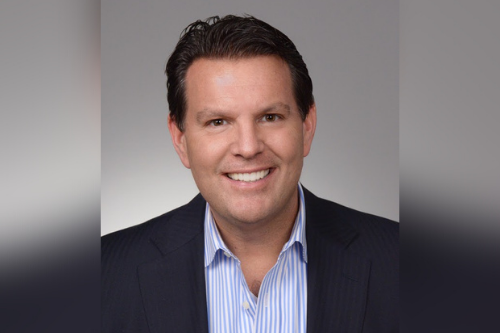

The recent grounding of cargo ship Ever Given in the Suez Canal has had a huge impact on shipping between Europe and Asia, disrupting the global supply chain and causing huge losses for businesses and their insurers.
According to Mark Robinson (pictured), president of UPS Capital, another similar disruption is brewing off Southern California, with multiple ships being forced to wait offshore due to congestion in the ports of Los Angeles and Long Beach.
“These are two high profile examples of supply chain disruption,” Robinson told Corporate Risk and Insurance. “The truth is every now and then, bad things happen to good cargo. According to the World Shipping Council, an average of 1,382 containers are lost or damaged at sea each year.”
Among all parties, some of the worst-hit are the businesses with goods aboard these vessels. The disruptions have a major impact on the businesses’ bottom lines, by causing delays to production, product availability and even last-mile deliveries to customers.
“As businesses are eager to recoup costs, the insurance claims process is often time-intensive,” he added. “Additionally, they may be surprised to learn about the breadth of carrier liability exceptions. When claims go unpaid or issues aren’t resolved in a timely manner, the damage is further compounded by impacts to brand reputation.”
These scenarios, Robinson said, serve to highlight the importance for risk managers and business decision makers to understand potential risks, as well as coverage options and the terms and conditions for each (e.g. carrier protection, declared value and third-party providers).
The disruption has had a trickle-down effect, with small and medium businesses (SMBs), being deeply affected due to their relative financial vulnerability.
“Given SMBs are often working under tighter financial margins, challenges such as elongated claims processes or liability immunities can have an immediate and devastating impact on their operations,” Robinson said. “Often, these businesses don’t have dedicated risk managers or employees dedicated to supporting these scenarios. Therefore, it falls in the hands of small business owners who may have limited experience with handling claims.”
According to Robinson, managing supply chain risks starts with wider education around these risks and forms of protection.
“There’s currently a lot of misconceptions in the market, and often businesses may think they’re covered for potential incidents when they are not,” he said. “Additionally, business decision makers may feel the accessibility of acquiring coverage for single or infrequent shipments is out of reach or too costly.”
To counteract this, Robinson believes that there should be a “democratization” of insurance, especially cover for smaller businesses that are the backbones of local economies.
“Many traditional insurers don’t know what kinds of goods were on the water in Suez, only the customers can speak to that,” he said. “Insurtech solutions can help monitor the amount of liability that is accumulating as these cargo backlogs grow, and dynamically adjust coverage in real-time based on accumulation of risk. This will allow SMBs and business decision makers, who may have less insurance specialization and know-how, the peace of mind when they have a trusted partner who can adjust their coverage dynamically and in real-time.”
Shipping risks will always be present to threaten global supply chains. According to Robinson, to manage these risks better, the industry must innovate in harnessing technology and automating processes.
One such model he puts forward is a digital transactional model, where cargo is insured on a per-shipment basis rather than through an annual or upfront premium policy.
“We’ll see more businesses seeking and finding transactional shipment level insurance offerings that allow them to customize based on patterns such as single shipments or leveraging conditional preferences based on potential risk factors,” Robinson said. “These affordable transactional insurance offerings can be served seamlessly into the normal working day of an SMB and will drive demand and usage moving forward. Insurance providers who are able to accommodate both and maintain a connection to customers in the claims process are the businesses that have the most opportunity of a future.”
